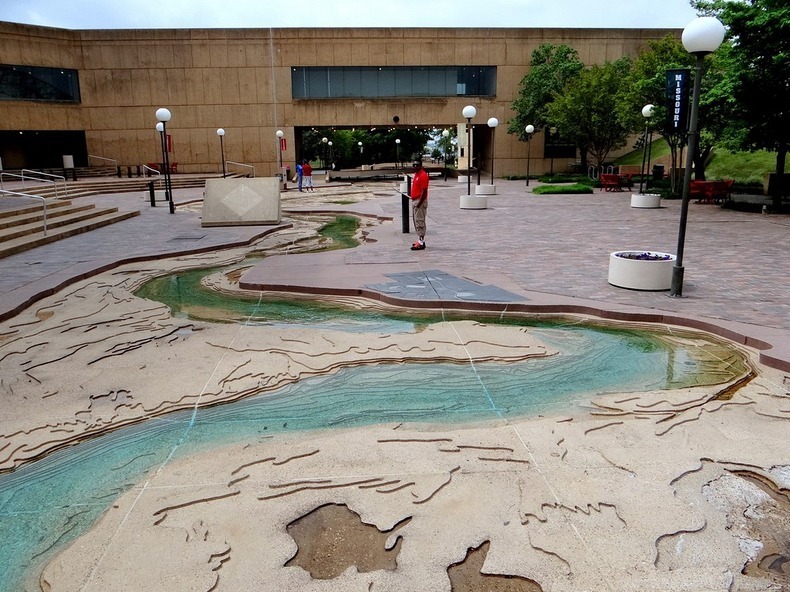Mud Island is not actually an island, it is a small peninsula, in downtown Memphis on the Mississippi River. But it did rose out of mud. What happened was that in 1876, the river shifted slightly about 20 miles south of Memphis, causing the currents that flowed past the city to alter course. Then in 1910, the U.S. Navy gunboat Amphitrite anchored at the mouth of the Wolf River for almost two years, causing a further change in silt patterns. When the ship left in 1912, the sandbar continued to grow, and Mud Island was born.
Initially, the residents disliked the island, since it was ugly and proved to be a danger to river navigation. The poor Memphians, however, found the island a nice place to squat. Beginning in the 1930s, the started building ramshackle homes built of scrap metal and wood. Between 200 and 500 people lived on the island during this time. Development really took off when the island opened an airport in 1959. The airport was closed in 1970 when the DeSoto Bridge was built, and a decade later the Mud Island River Park was opened – an attraction consisting of the Mississippi River Museum, an amphitheater, outdoor activities and a flowing replica of the Mississippi River.
A thousand miles of the lower Mississippi River from Cairo, Illinois to New Orleans and finally to the Gulf of Mexico, where the river empties, is replicated in a section of the park called the Riverwalk. Built at the scale of 30 inches to a mile, the replica spans 2,000 feet of riverfront space where every sandbar, oxbow, and topographic contour is faithfully reproduced in cement. The river itself is a little stream that flows quietly south past minimalist cities and bridges rendered in steel. The attraction also includes historical information about the river as well as details on the engineering feats that make continued life and use of the river possible. Major cities and small towns located on the river are marked in the scale model, and markers explain history and facts about the river. The water drains to an acre-wide representation of the Gulf of Mexico where visitors could rent swan-shaped pedal boats. An average of 1.2 million gallons of water flows through the river model every day.
Aside from the Riverpark, there is the Mississippi River Museum that celebrates the history and significance of the "Mighty Mississippi." Exhibits focus on the lower Mississippi River and offer insight into the Native American inhabitants of the area, transportation along the river and its importance during the Civil War. Local celebrities such as Mark Twain and Mike Fink are also reproduced, along with an assortment of gamblers, roustabouts, and other steamboat characters.

Sources: Wikipedia, Roadside America, Moon Travel Guides, USAToday
























This is a VERY fascinating work that every schoolchild should see.
ReplyDeleteI remember going to mud Island when I was about 13 years old, didn't really care about the history then but thought the model was really cool.
ReplyDelete